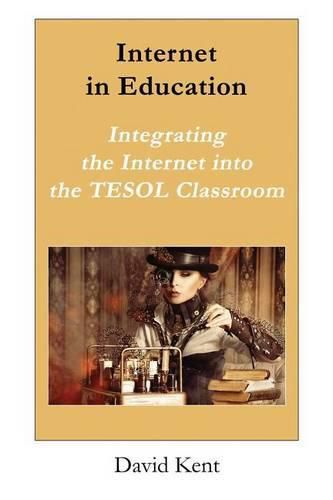Readings Newsletter
Become a Readings Member to make your shopping experience even easier.
Sign in or sign up for free!
You’re not far away from qualifying for FREE standard shipping within Australia
You’ve qualified for FREE standard shipping within Australia
The cart is loading…






In a world where there is still a digital divide, and where many second-language learners are digital natives, the internet has unquestionably come to provide significant impact on the way that we communicate, teach, learn, and live. The major pedagogical promise has come with the shift away from the static provision of information to that of dynamic information sharing and user-generated content. The internet has become much more than a source of authentic materials and supplemental resources for the teaching of English to speakers of other languages (TESOL); it now provides a means for students to engage in functional communicative experiences, write and communicate with a wider audience, and showcase their work. All kinds of topics and resources are available, but as most are unsuitable for language learning, they need to be selected wisely. Guidance needs to be effective, and those with little experience in using digital tools and websites for learning need to be kept from becoming disengaged. This is where the teacher and this book perform a critical role.In this book, the focus is on the use of various tools and techniques that help students to express themselves and to learn with technology, particularly those which rely on the internet to function, those that have been around since the dawn of the internet, and those that have evolved with the growth of the internet. Specifically covered is: world-wide-web utilization for the fostering and development of multiple literacies through socio-constructivist learning via the WebQuest model, constructing visually-based asynchronous digital conversations with VoiceThread, and developing user-generated content with blogs and wikis. The book is intended to be read in whole or in part by teachers, students, parents, and any other stakeholders who may be interested in the topics.
$9.00 standard shipping within Australia
FREE standard shipping within Australia for orders over $100.00
Express & International shipping calculated at checkout
In a world where there is still a digital divide, and where many second-language learners are digital natives, the internet has unquestionably come to provide significant impact on the way that we communicate, teach, learn, and live. The major pedagogical promise has come with the shift away from the static provision of information to that of dynamic information sharing and user-generated content. The internet has become much more than a source of authentic materials and supplemental resources for the teaching of English to speakers of other languages (TESOL); it now provides a means for students to engage in functional communicative experiences, write and communicate with a wider audience, and showcase their work. All kinds of topics and resources are available, but as most are unsuitable for language learning, they need to be selected wisely. Guidance needs to be effective, and those with little experience in using digital tools and websites for learning need to be kept from becoming disengaged. This is where the teacher and this book perform a critical role.In this book, the focus is on the use of various tools and techniques that help students to express themselves and to learn with technology, particularly those which rely on the internet to function, those that have been around since the dawn of the internet, and those that have evolved with the growth of the internet. Specifically covered is: world-wide-web utilization for the fostering and development of multiple literacies through socio-constructivist learning via the WebQuest model, constructing visually-based asynchronous digital conversations with VoiceThread, and developing user-generated content with blogs and wikis. The book is intended to be read in whole or in part by teachers, students, parents, and any other stakeholders who may be interested in the topics.